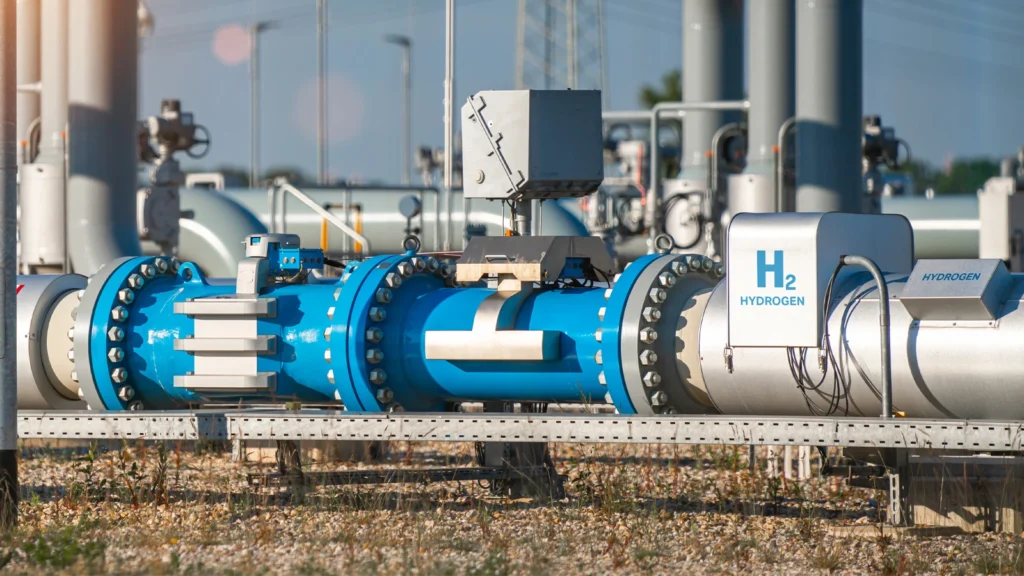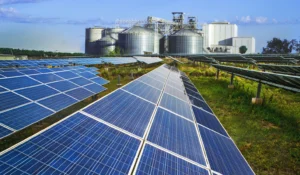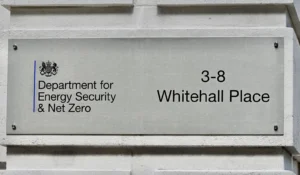“Low Carbon Hydrogen” explained. What does it mean exactly?

Hydrogen comes in many forms. Or rather, it comes in one form – colourless, odourless, highly energetic – but is produced in various ways, from fossil gas to renewables to nuclear.
For years, the industry has leaned on a colour-coded shorthand: grey, blue, green, pink, and a few others that didn’t quite stick.
But now, another label is quietly taking over: “low carbon hydrogen”.
Unlike the colours, this one has a number attached – and increasingly, it’s the number that decides whether a hydrogen project qualifies for public funding, regulatory approval, or international certification.
So what does low carbon hydrogen actually mean?
Why definitions matter
The colour system was useful in early conversations – a way to simplify a complex industry for investors, policymakers, and journalists. But it has its limits.
“Blue hydrogen”, for example, could mean anything from 30% to 95% CO₂ capture, with no guarantee of upstream methane emissions being accounted for.
“Green” sometimes meant fully renewable, sometimes not.
Now that governments are putting real money behind hydrogen production, they’re asking for more than labels. They want data.
Specifically, carbon intensity – measured in kilograms of CO₂ equivalent per kilogram of hydrogen.
If a project’s emissions are below the set threshold, it qualifies as low carbon. If not, it doesn’t.
The UK: 2.4kg of CO₂e per kg of hydrogen
In the UK, the Department for Energy Security and Net Zero has set a clear limit: to qualify as low carbon, hydrogen must produce no more than 20g of CO₂ equivalent per megajoule of energy, using the lower heating value (LHV*).
That’s roughly 2.4kg of CO₂e per kilogram of hydrogen.
*(LHV is the amount of usable energy after water vapour from combustion is excluded – the standard metric for comparing fuels.)
This figure now underpins the UK’s Low Carbon Hydrogen Standard (LCHS). If a project wants to access government support – through the Hydrogen Production Business Model, for instance – it must stay below that threshold.
It’s a technology-neutral approach. Hydrogen can be produced by electrolysis, reforming with carbon capture, pyrolysis, or any other pathway.
What matters is the outcome – the emissions. Producers must model these using a government-supplied calculator, and emissions must be verified.
The methodology is detailed – it includes upstream emissions (e.g. gas extraction or electricity generation), process emissions, compression and purification, and fugitive hydrogen losses.
There are also materiality thresholds, lifecycle boundaries, and guidance on everything from energy sourcing to solid carbon distribution.
It’s not simple. But it is consistent.
The EU: 70% lower than grey hydrogen
The EU has taken a similar route, but framed the benchmark differently. Under the Hydrogen and Gas Market Directive, low carbon hydrogen is defined as hydrogen that achieves at least a 70% reduction in lifecycle greenhouse gas (GHG) emissions compared to the grey hydrogen baseline.
This allows for a broad range of production methods – including electrolysis using nuclear power, or fossil-based hydrogen with high carbon capture rates – as long as they meet the emissions reduction target.
A formal Delegated Act to define the methodology is due by August 2025, but until then, developers are working on the assumption that full lifecycle emissions – from feedstock to hydrogen production – will need to be calculated using standardised methods.
The EU also distinguishes between renewable hydrogen (made with renewable electricity under strict conditions) and low carbon hydrogen (from non-renewable sources, but with lower emissions).
Both will have roles to play – but only if they can prove their carbon performance.
The US: 4kg CO₂e per kg hydrogen, well-to-gate
The U.S. Department of Energy has adopted a Clean Hydrogen Production Standard (CHPS), setting a target of less than 2kg CO₂e per kg of hydrogen at the production site.
But for federal incentives – especially the generous 45V tax credit – the threshold is broader: no more than 4kg CO₂e per kg of hydrogen, calculated on a well-to-gate basis.
That includes upstream emissions (like natural gas production or electricity generation), process emissions, and carbon capture – everything up to the point where the hydrogen leaves the plant.
Projects that can get under 0.45kg CO₂e per kg H₂ are eligible for the full $3/kg tax credit. Between 0.45 and 4kg, the support scales down. Above 4kg, there’s no support at all.
The Department of Energy cites several production pathways that can meet the 4kg target today, including:
- Steam methane reforming with ~95% carbon capture, assuming low methane leakage,
- Electrolysis using mostly clean electricity (e.g. renewables or nuclear),
- Biomass-based hydrogen, depending on assumptions used.
The goal is clear – to enable a range of production methods, but ensure only the cleanest get support.
So, what is low carbon hydrogen?
In short: it’s not a colour, it’s a carbon number.
Depending on where you are:
- In the UK, it’s anything below 2.4kg CO₂e per kg H₂
- In the EU, it’s a 70% emissions reduction vs. grey hydrogen
- In the US, it’s ≤4kg CO₂e/kg H₂, with stronger incentives for lower numbers
It doesn’t matter whether the hydrogen comes from electrolysis, fossil gas, biomass, or a reactor in the middle of a field. What matters is how much carbon it emits across its production lifecycle.
And that, increasingly, is what decides whether a project gets built.
The shift from colours to carbon
The hydrogen sector is moving away from colour-coded marketing and towards measurable emissions data.
That’s good news. Colour labels were a helpful starting point, but they don’t capture the complexity of real-world emissions.
With billions of dollars, pounds, and euros now tied to emissions thresholds, precision certainly matters.
Carbon intensity isn’t just a technical detail anymore – it’s the dividing line between viable and non-viable hydrogen production.
Final word
“Low carbon hydrogen” may sound like another bit of industry jargon, but it’s quietly reshaping how hydrogen gets made, funded, and deployed. The colour wheel is fading and the spreadsheet is now in charge.
And if you’re making hydrogen in 2025, you’ll need to know your number – not just your colour.














